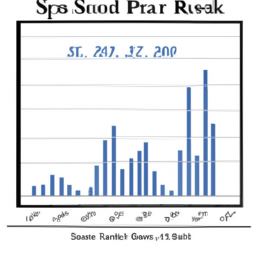Investing in the S&P 500 can be an intimidating prospect, but it doesn't need to be. With the right guidance, you can make smart and informed decisions about investing in the S&P 500 index fund and ETFs, as well as the stocks themselves. This guide will provide you with the information you need to get started.
The S&P 500 is an index of 500 of the largest publicly-traded companies in the United States. It is a benchmark for the overall stock market, and an important part of many investors' portfolios. To invest in the S&P 500, you can purchase an index fund or an exchange-traded fund (ETF). Most employer-sponsored retirement accounts—like 401(k)s or 403(b)s—offer at least one S&P 500 index fund. You can also purchase an S&P 500 ETF, like the SPDR S&P 500 (ticker symbol $SPY).
Because of the low cost of index funds, investing in the S&P 500 allows you to invest more of your money rather than using a portion of it to pay exorbitant fees. As a passive investment, index funds do not require any upkeep, meaning you can "set and forget" your investments.
It is important to understand the risks associated with investing in the S&P 500. The index is affected by the performance of the individual stocks that comprise it, so if one stock falls, the index can fall as well. Additionally, the S&P 500 is a cyclical index, meaning that its performance is tied to the economic cycle. As such, it is important to understand the economic environment in which you are investing and to diversify your portfolio accordingly.
In the long run, historical evidence suggests that investing in the S&P 500 will yield positive returns. The S&P 500 has fallen into a bear market, but the benchmark index has recovered from every past drawdown. The Vanguard S&P 500 Growth ETF, for example, has returned an average of 10.4% over the past 20 years.
When investing in the S&P 500, it is important to understand the different types of investments available. Some investors invest directly in the S&P 500 constituents using an index fund. As such, tracking its annual returns can provide some insight into the performance of the individual stocks.
On the other hand, ETFs provide exposure to the S&P 500 index itself, but you can invest in an exchange-traded fund (ETF) like the SPDR S&P 500 (ticker symbol $SPY) that tracks the index. ETFs are a great way to gain exposure to the S&P 500 without having to purchase individual stocks.
Perhaps the best part of an S&P 500 index fund, though, is that it's a passive investment that requires next to no upkeep. You never need to worry about rebalancing your portfolio or making any changes to your investments. In other words, if you had invested in an S&P 500 index fund or ETF at any point after 1900 and held your investments for 20 years, you would have seen positive returns.
In conclusion, investing in the S&P 500 can be a great way to diversify your portfolio and take advantage of the long-term growth potential of the stock market. With the right guidance, you can make smart and informed decisions about investing in the S&P 500 index fund and ETFs, as well as the stocks themselves.
